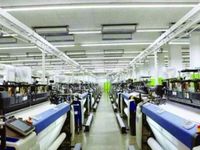Pakistan’s textile and apparel sector is at a pivotal crossroads, fueled by a dynamic mix of foreign investment, regulatory change, and a renewed focus on workplace safety. In August 2025, the country secured a 19 percent U.S. tariff rate—the lowest in South Asia—setting the stage for a surge in exports and a wave of industrial transformation. But as manufacturers gear up for growth, they face a complex landscape shaped by rising costs, infrastructure challenges, and a bold new player: a $150 million Chinese garment manufacturing project in Punjab.
According to Sourcing Journal, the Pakistan Accord on Health and Safety in the Textile and Garment Industry is moving into the final leg of its initial three-year mandate, launched in January 2023 and widely expected to be extended. This initiative, designed to improve safety across the supply chain, has seen significant engagement from both brands and local factories. As of August 2025, 138 brands have signed onto the Accord, sourcing from over 645 suppliers that collectively employ more than 700,000 workers. More than 245 factories in Karachi, Lahore, and Faisalabad have undergone inspections for fire, electrical, and structural safety.
Joris Oldenziel, executive director of the International Accord, told Sourcing Journal, “Our team on the ground is working closely with both brands and factories to support implementation efforts and drive meaningful safety improvements across the industry.” Tangible upgrades have included the installation of fire safety doors, reinforcement of structural columns, and resolution of electrical hotspots. This hands-on approach has not only improved safety but also reassured global brands about the well-being of their supply chain partners.
“We’ve had multiple factories say that after the inspections their business has increased. It is true that brands would rather place orders in factories where safety hazards have been addressed,” Oldenziel added. The Accord has also empowered workers, with All-Employee Meetings held in over 70 factories and Initial Meetings in more than 200, reaching more than 260,000 workers. These sessions aim to raise awareness of health and safety risks and distribute information on the Worker Complaints Mechanism.
Meanwhile, Pakistan’s textile and apparel exports are on an upward trajectory. According to the Pakistan Bureau of Statistics, exports for the fiscal year 2024–25 rose 7.39 percent to $17.88 billion, up from $16.65 billion the previous year. Knitwear led the charge, contributing $5.01 billion (a 13.88 percent increase), while woven garments and home textiles also saw double-digit growth. Analysts credit this momentum to several factors, including unrest in Bangladesh, the “China plus one” sourcing strategy, and the improvements brought by the Accord.
But not all is smooth sailing. Former finance minister and political economist Miftah Ismail highlighted on social media, “Electricity and gas tariffs are higher than almost all developing countries, and our taxes are higher than even most developed countries. Plus, there are serious infrastructure issues in some provinces (for instance, most factories in Karachi have to buy water for millions of rupees a month) and there are law and order issues across Pakistan.”
These challenges have become even more pronounced with the arrival of a major Chinese garment manufacturer. As reported by The Express Tribune, a $150 million project was announced in August 2025 for Punjab’s proposed Special Economic Zone. Covering 100 acres and expected to begin operations within a year, the facility will employ around 25,000 workers and produce up to 8 million garments per month, supplying leading American apparel brands directly from Pakistan.
Shahid Khan, general manager of a large garment unit in Faisalabad, remarked, “If a Chinese company can bring in cutting-edge machinery, secure US buyers, and deliver on time, they will dominate. The only way for us to counter this is to either match their efficiency or partner with them through joint ventures.”
This investment is not without controversy. While it promises jobs, export revenue, and technology transfer, much of the capital and eventual profits are expected to flow back to China. Some domestic textile exporters see the move as both a threat and an opportunity. Imran Yousaf, a home textiles exporter, argued, “Yes, a big Chinese player can take market share, but they can also be a partner. If Bangladesh can grow exports with higher tariffs, why can’t we with the lowest tariff in the region?”
Trade economist Farah Iqbal explained, “Producing in Pakistan now makes perfect sense for Chinese manufacturers. They get a lower tariff rate into the US market, local government incentives, and proximity to cotton-producing regions. For Pakistan, it’s an investment inflow, but the challenge is ensuring that local companies also grow and do not get sidelined.”
The sector’s optimism is tempered by operational hurdles. Energy costs for Pakistani mills are among the highest in the region, and cotton shortages are acute. The United States Department of Agriculture’s Foreign Agricultural Service forecasts Pakistan’s cotton production for 2025/26 at just 5.5 million bales—far below the 15 million bales needed by the industry, forcing reliance on expensive imports. “If the government reduces duties on imported cotton and polyester fibre, we could operate at full capacity,” said Waheed Abbas, a spinning mill owner. “Otherwise, Chinese units in SEZs with better incentives will be the only ones expanding exports to the US.”
Challenge Fashion Pvt Ltd, the Chinese firm behind the Punjab project, will benefit from export-based concessions under the Special Economic Zone framework, with provincial government support for infrastructure, security, and fast-track approvals. “We are facilitating this investment with infrastructure, security, and fast-track approvals,” a senior Punjab government representative confirmed. This approach is part of a broader strategy to attract large-scale, export-oriented industries in light of Pakistan’s improved tariff position.
The move also aligns with the China-Pakistan Economic Corridor (CPEC), a multibillion-dollar infrastructure project aimed at integrating Pakistan more deeply into regional trade routes. Joint ventures could allow local firms to access foreign technology, investment, and global distribution networks without losing local ownership completely.
As the industry looks ahead, the next 18 months are expected to be decisive. Industry pundits say that converting Pakistan’s cost advantage into higher exports will require immediate policy action: reducing energy costs, ensuring steady raw material supplies, speeding up tax refunds, and improving port logistics. The recent entry of a Chinese textile group signals that international players are already eyeing Pakistan as a competitive base for exports to the US and EU.
On the safety front, the Accord’s boiler safety team began inspections in February 2025, visually inspecting 51 boilers, with future plans for hazard identification in collaboration with fire engineering teams. The average remediation cost per factory is about $250,000, though this can range from $100,000 to $10 million depending on factory size. At a summer 2025 meeting of Accord signatories in Amsterdam, Zulfiqar Shah, country director of the Pakistan Accord, reported encouraging feedback on worker safety training and government capacity building programs.
Paul Rigby, Chief Safety Officer, highlighted common issues such as overstressed structural columns and insufficient safe exits, stressing that engagement between brands, retailers, and suppliers is crucial for faster remediation and stronger relationships. The International Accord is even considering expanding its model to other countries, with India, Morocco, and Cambodia on the shortlist for late 2025 or early 2026.
For now, Pakistan’s textile sector stands at a rare juncture of opportunity and challenge. The decisions made in the coming year—by policymakers, investors, and industry leaders—will shape not only the future of the country’s largest export industry, but also its role in the global supply chain.




